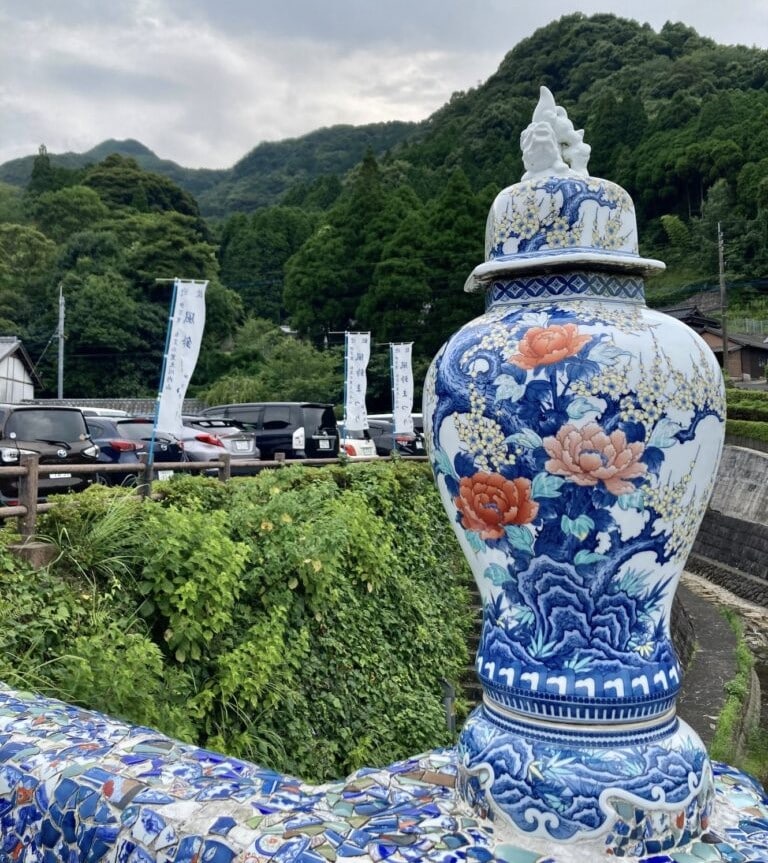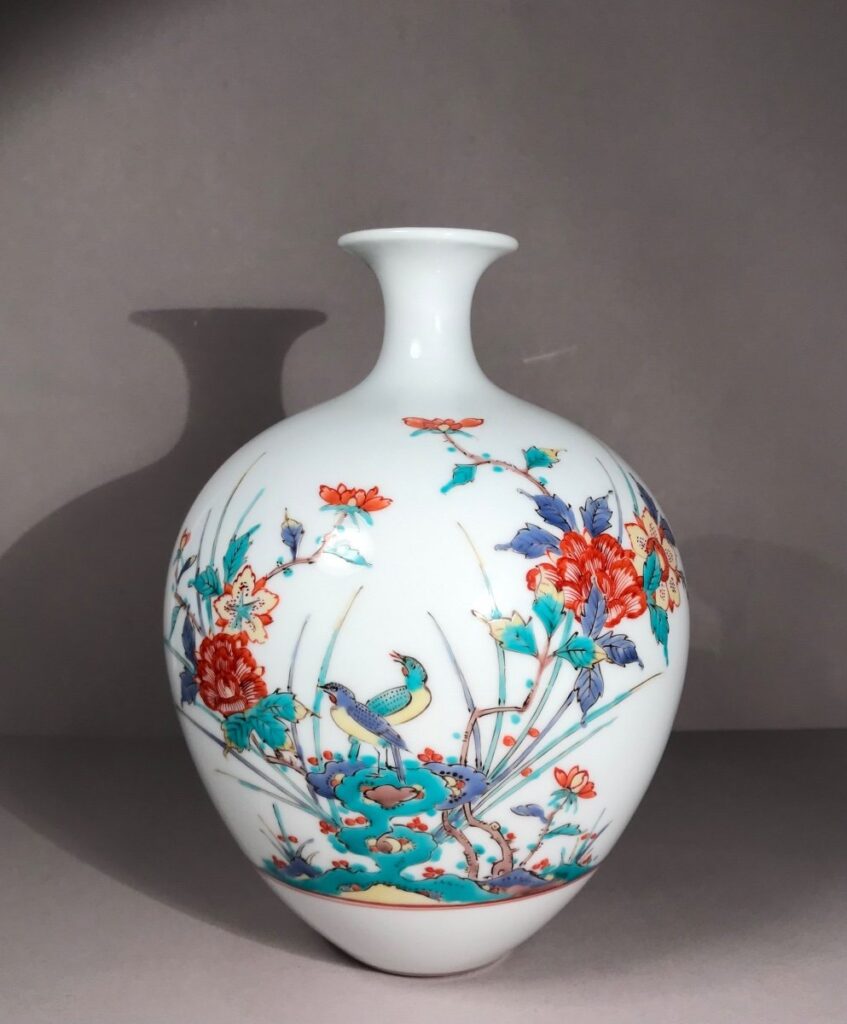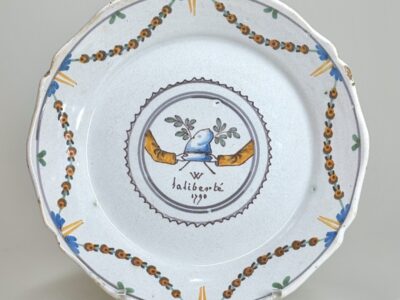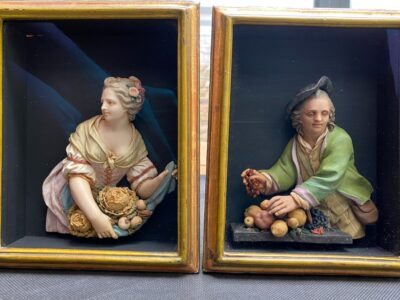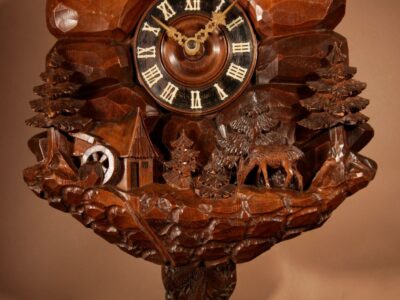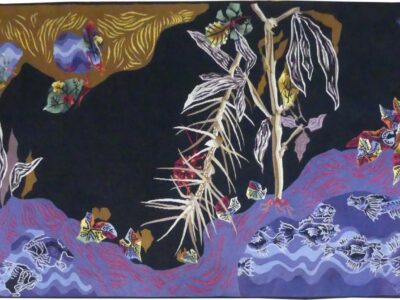Nestled in the picturesque mountains of Saga Prefecture in Southern Japan is the birthplace of a distinctive ceramic tradition going back centuries, once known as the Hizen region.
The discovery of rich clay deposits by Korean potter Yi Sam-pyeong in the early 17th century laid the foundation for the birth of Hizen pottery.
During the Edo period (1603-1868), Arita, Imari, and Karatsu, part of the Hizen region, became a hub of ceramic production, giving rise to the eventual development of unique stoneware and porcelain that would adorn the tables of Japanese lords and decorate the shelves of European elites. Revered for its exquisite craftsmanship, innovative techniques, and historical significance, Hizen pottery has left an indelible mark on the world of art and pottery.
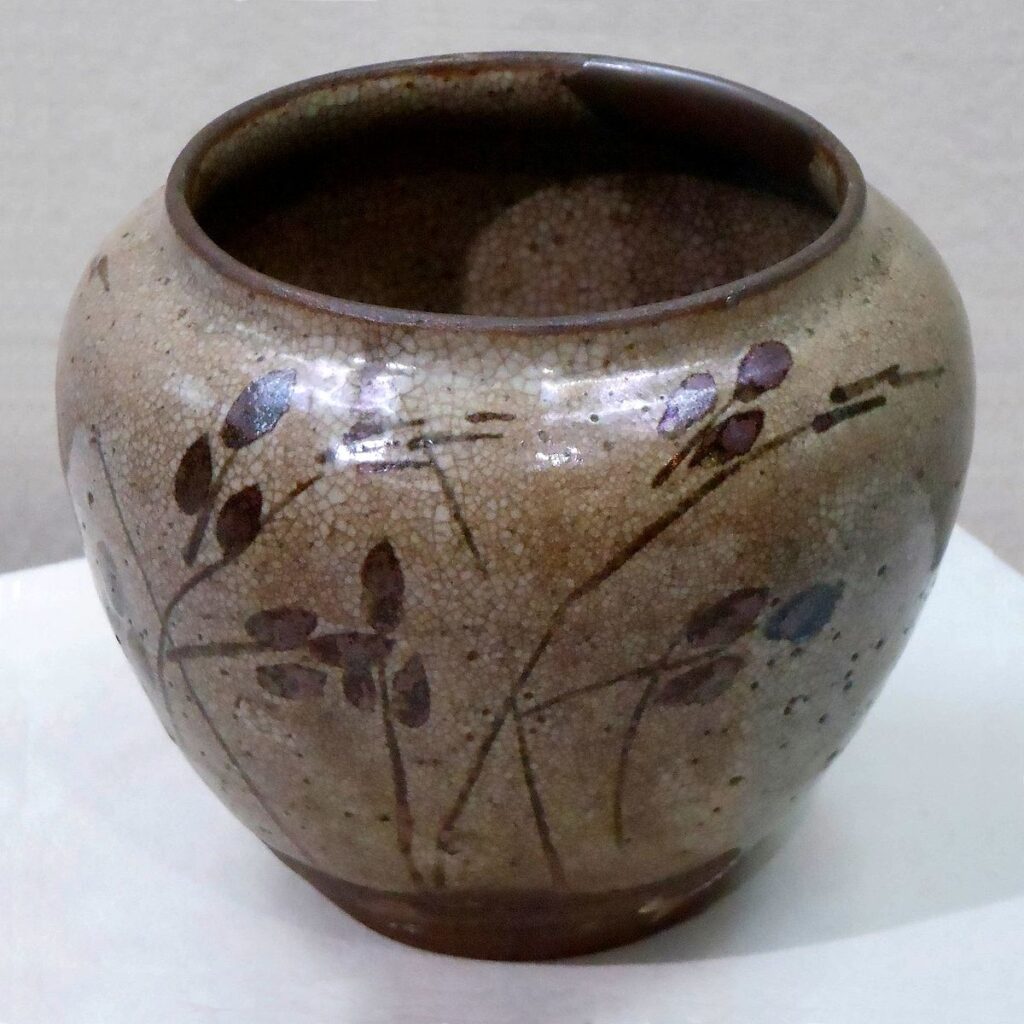
A glazed Karatsu ware vase decorated with a botanical motif. CC
Karatsu Ware
Karatsu ceramics have a long and storied history that dates back to the late 16th century with the arrival of Korean potters from the mainland, bringing their own experience and expertise. This included the climbing kiln, the kick wheel, and new glazing technologies. Because of this, the development of Karatsu ware was highly influenced by Korean pottery styles, but also by local techniques and style preferences. This fusion of Korean and Japanese techniques and aesthetics gave birth to a distinctive style that sets Karatsu ceramics apart. The rich clay deposits found in the region played a crucial role in shaping this art form, as they allowed potters to create a wide range of textures and colors in their work.
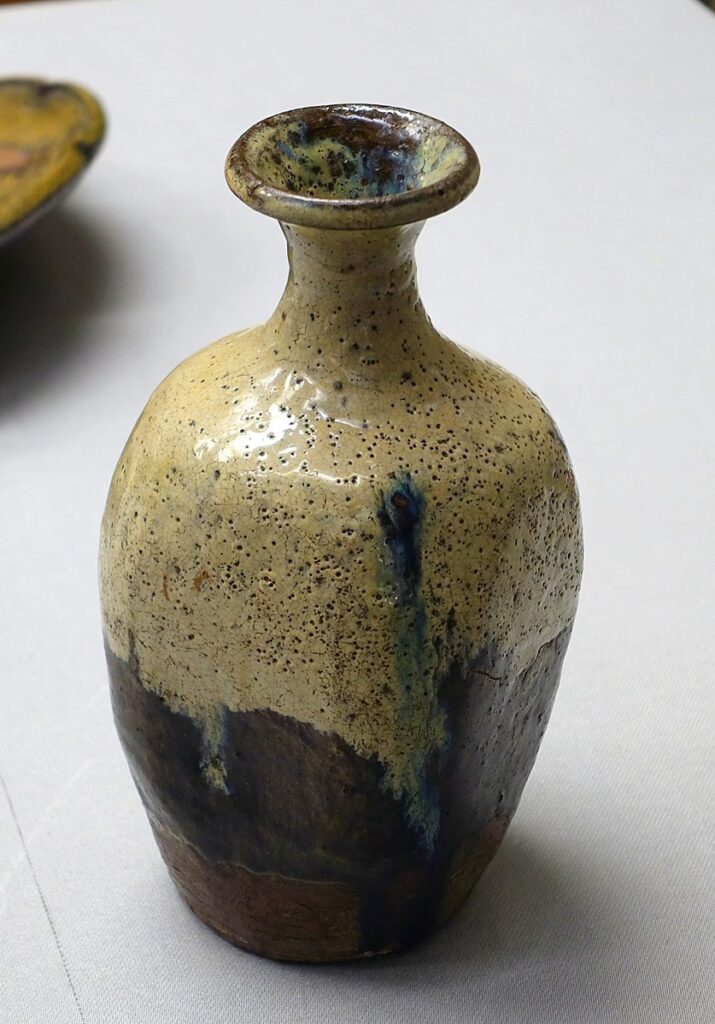
Karatsu stoneware vase. CC
Distinctive Karatsu Characteristics
Karatsu ceramics are celebrated for their understated elegance and simplicity. They often feature earthy, muted tones such as warm browns, soft grays, and deep greens, creating a sense of harmony with nature. This aesthetic minimalism is a stark contrast to the ornate styles of other Japanese pottery traditions. While there are many different glazing techniques used in the creation of Karatsu ware, most emphasize the natural texture and color of the clay with complementary muted tones. The diverse glazing techniques also allow for a wider range of artistic expression.
Unlike the perfectly symmetrical forms of some other pottery traditions, Karatsu ceramics often boast irregular shapes. These imperfections are not seen as flaws but rather as a reflection of the natural, unrefined beauty that characterizes this style. Karatsu ceramics embody the wabi-sabi philosophy, which celebrates imperfection, impermanence, and the beauty of simplicity. This philosophy deeply influences both the creation and appreciation of Karatsu ware.
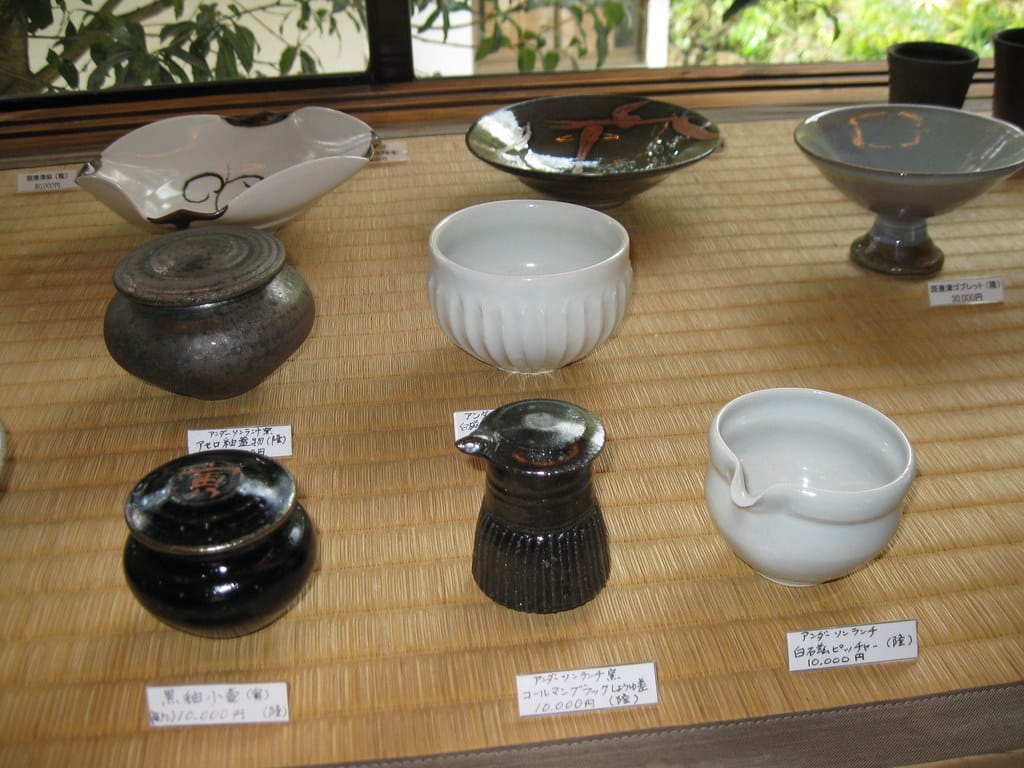
A selection of Karatsu dishes for sale. CC
Uses for Karatsu
Karatsu ware is commonly used for serving food and drink. The unglazed surfaces help to absorb excess moisture, making it ideal for sushi, sashimi, and other traditional Japanese dishes. The rustic appearance of Karatsu tableware also enhances the dining experience, connecting the user to nature. Karatsu ceramics hold a special place in Japanese tea culture, known as chanoyu or the Way of Tea. The simplicity and authenticity of these ceramics align perfectly with the tea ceremony’s principles of harmony, respect, purity, and tranquility.
The earthy tones and natural textures of Karatsu vases and containers make them a favored choice for ikebana (Japanese flower arranging). The vases complement the beauty of seasonal blooms and enhance the overall artistic presentation. Karatsu ceramics are also admired as standalone pieces of art. Collectors around the world appreciate their unique aesthetics and historical significance. Many contemporary artists continue to push the boundaries of Karatsu pottery, creating innovative and modern interpretations of this traditional craft.
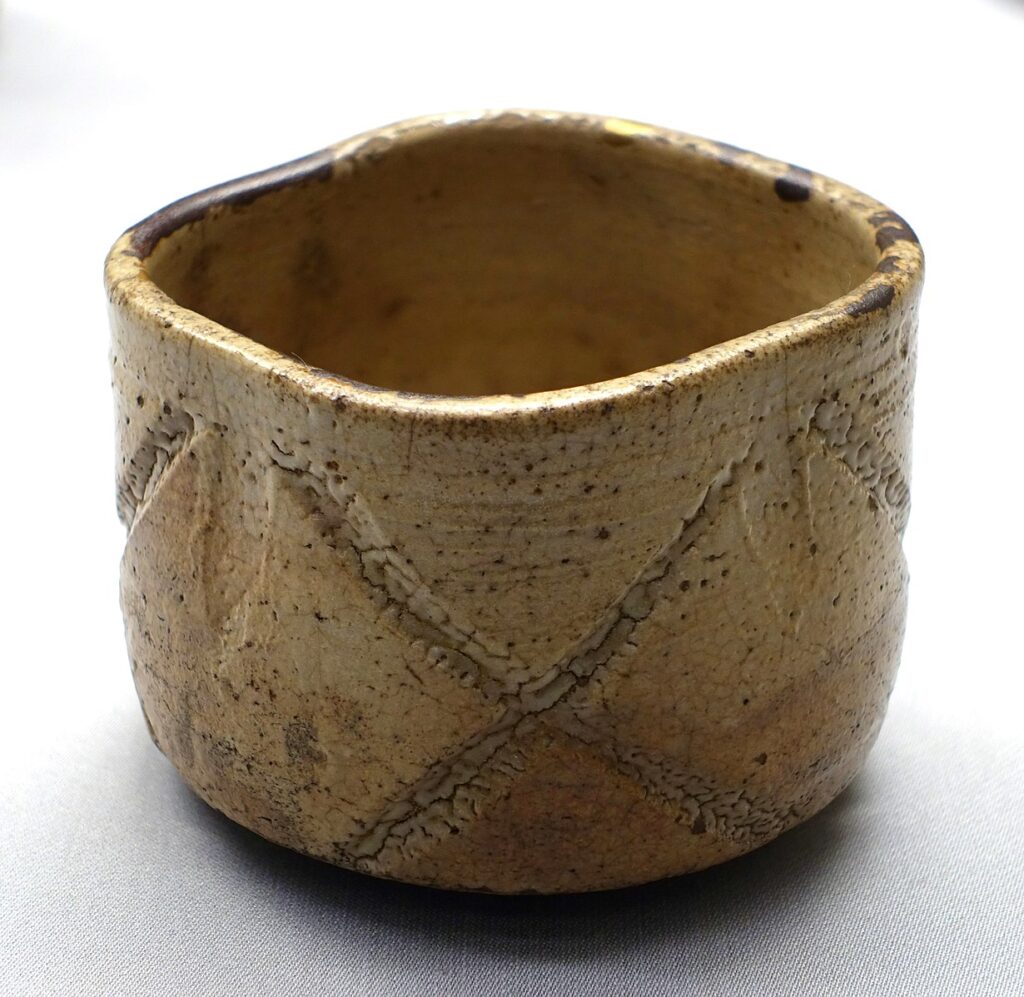
Karatsu stoneware cup. CC
Arita Ware and Its Distinctive Imari and Kakiemon Styles
Arita porcelain, celebrated for its delicate beauty, rich history, and exquisite craftsmanship, stands as a shining gem in the world of ceramics. Originating from the town of Arita in the Hizen region, this porcelain has captivated the world with its serene elegance and timeless appeal. In this extensive article, we will explore the deep-rooted history, distinctive styles, variants, versatile usage, and enduring collectability of Arita porcelain.
The story of Arita porcelain dates back to the discovery in abundance of high-quality porcelain clay in the village of Arita in the early seventeenth century. This discovery marked the inception of porcelain production in the area, which would later become renowned for its craftsmanship. During the Edo period (1603-1868), Arita porcelain gained prominence as a favored commodity among the Japanese elite. The sponsorship of the local ruling family, the Nabeshima, led Arita porcelain to be dubbed as “Nabeshima ware.” The fine porcelain was also exported to Europe via the nearby port of Imari, giving rise to the term “Imari porcelain.”
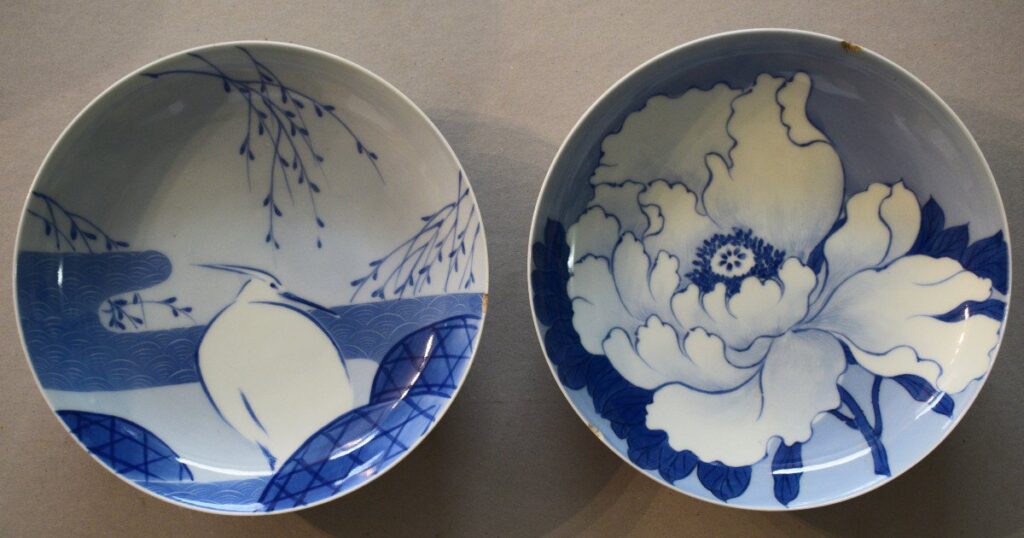
Nabeshima ware porcelain plates from Arita, 19th century. © Parcours Antiques
Distinctive Arita Characteristics
The hallmark of Arita porcelain is its pristine, milky-white appearance. This immaculate canvas is achieved through the use of exceptionally pure porcelain clay, mined from the abundant deposits in the Arita region. The resulting porcelain is not only visually captivating but also translucent, allowing light to gently permeate the delicate forms. Another striking feature of Arita porcelain is the exquisite blue underglaze used in its creation. These designs are often intricate and meticulously applied, creating a harmonious contrast with the porcelain’s pure white background. Traditional motifs frequently include scenes from nature such as blooming flowers, birds in flight, or serene landscapes. These motifs evoke a sense of timeless elegance and tranquility.
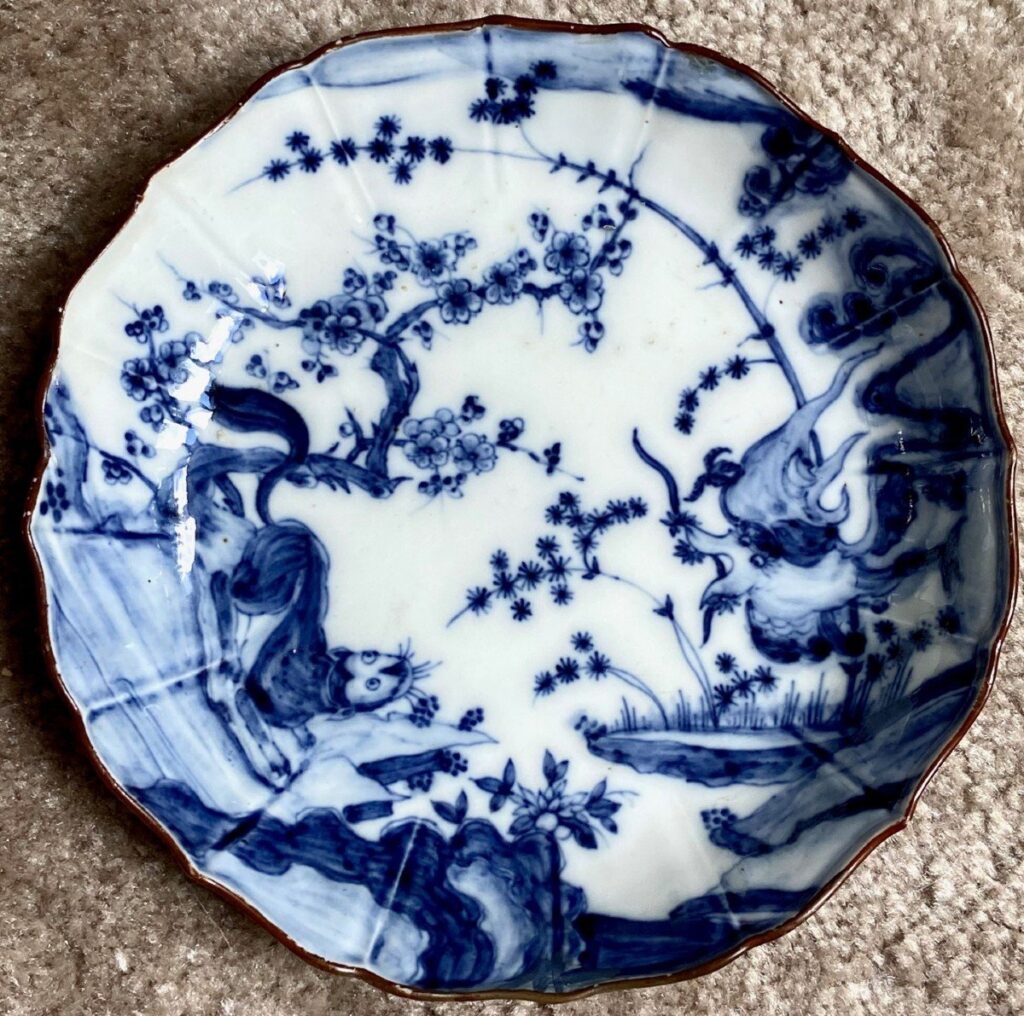
Arita porcelain plate with a landscape in blue glaze, 19th century. © Van Rijn
Kakiemon Style
One of the most important styles to come out of the development of Arita porcelain was the Kakiemon style. The potter Sakaida Kakiemon I (1596 — 1666), often regarded as the founder of the Kakiemon tradition, developed a unique style of porcelain production that incorporated delicate enamel overglaze decoration and a refined white porcelain base. His work was highly influenced by Chinese and Korean ceramics, but he added a distinct Japanese touch by using vibrant colors like red, blue, green, and gold to create intricate patterns and motifs. His first notable achievement was the creation of Aka-e (red painting), which became a signature style of Kakiemon porcelain.
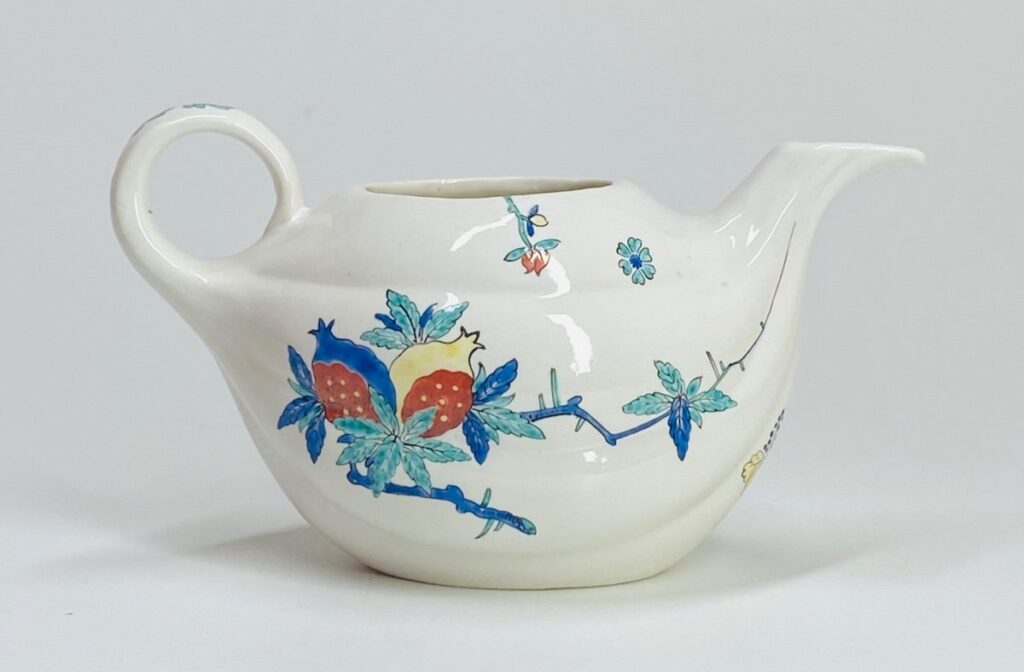
Kakiemon style teapot from Arita, c. 1740. © Bils Ceramiques
The hallmark of Kakiemon-style porcelain is its intricate hand-painted designs. Artists meticulously apply colorful enamels to the porcelain surface, often depicting nature-inspired motifs such as flowers, birds, and animals. The level of detail and precision in these designs is a testament to the extraordinary craftsmanship of Kakiemon artisans. The style is also celebrated for its vibrant and bold color palette. The dominant colors are iron-red, cobalt blue, and vivid green, which are skillfully combined to create visually stunning compositions. The use of gold accents adds a touch of opulence to the pieces.
Kakiemon style porcelain is typically crafted from a fine white porcelain clay, which provides an elegant backdrop for the vivid enamel decoration. This contrast between the pristine white and the colorful designs enhances the overall aesthetic appeal. The firing process is a crucial element to achieving the characteristic milky, translucent quality of Kakiemon porcelain. The pieces are fired at high temperatures in specially designed kilns, allowing the enamels to fuse with the porcelain, resulting in a smooth and glossy finish.
Imari Style
As mentioned earlier, the name Imari is linked to Arita because porcelain produced in Arita was exported via the nearby port of Imari. There are two periods of exportation for Imari ware: roughly 1650-1740 (while China was struggling to transition from the Ming to the Qing) and after 1853, when Japan was forced to reopen trade. Although this applies to all Arita ware, the term Imari also refers to a specific type of Arita ware and came to denote a distinct style of porcelain from Arita.
With the Imari style, we move beyond the pure blue-and-white palette. Instead, Imari is richly decorated with red, gold, and at times black (or dark blue), green, or other colors in addition to blue and white. The overall effect is particularly ornate. Its success in Europe was such that, after China stabilized under the Qing dynasty and porcelain exports resumed around 1750, Jingdezhen workshops produced pieces imitating the Imari style.

On this large Imari Kinrande porcelain bowl, the Japanese textile patterns are particularly prominent. © Ponvianne Antiquités
The most popular variation of Imari in Europe has been Kinrande, meaning “gold brocade”. True to its name, Imari Kinrande incorporates gold accents, yet its enduring appeal lies chiefly in the unique interplay of Japanese textile-inspired patterns, rich with floral motifs.
Enduring Legacy of Hizen Ceramics
Hizen pottery and porcelain stand as a testament to the enduring craftsmanship and innovation of Japanese ceramics. Its rich history, diverse styles, and cultural significance have contributed to its global recognition and appeal. Whether adorning museum collections, gracing tea ceremonies, or enhancing daily life, Hizen pottery continues to be cherished and admired by art enthusiasts and collectors worldwide. It serves as a reminder of the indomitable spirit of creativity and craftsmanship that has defined Japanese ceramics for centuries. Their beauty has outlasted the centuries, and they have become a highly sought-after collector’s item because of their unique and elegant nature.
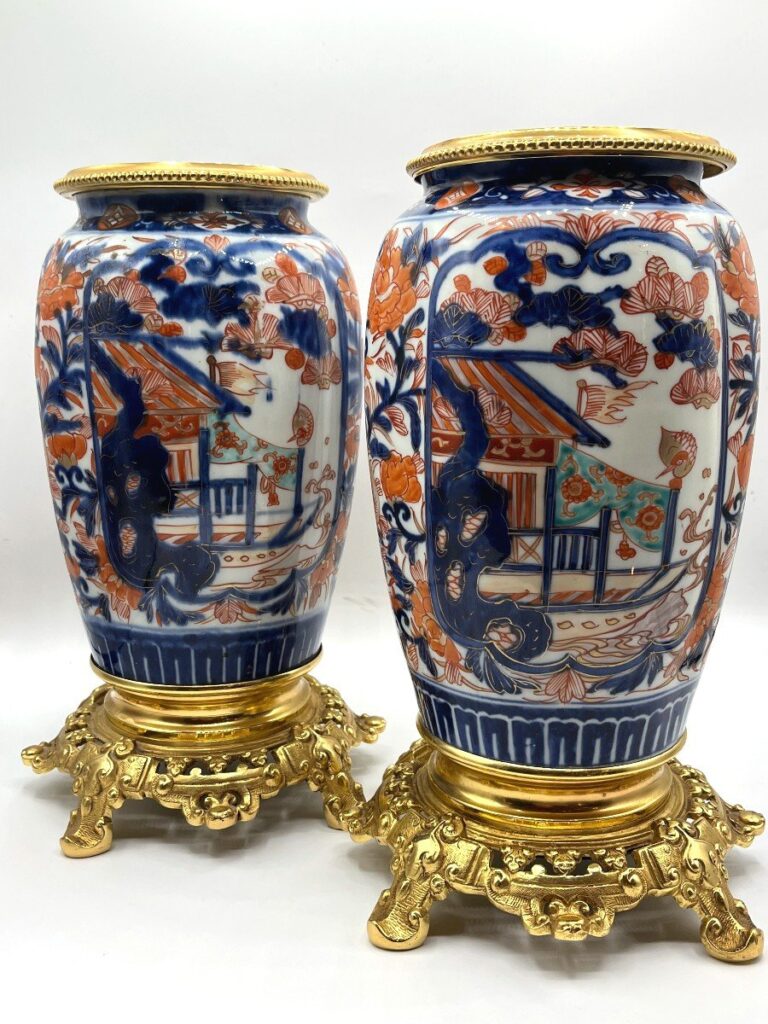
Pair of mounted Imari porcelain vases, 19th century. © Valérie Muné
You May Like
Arita Porcelain | Imari Porcelain | Kakiemon Style | Asian Art | Porcelain


